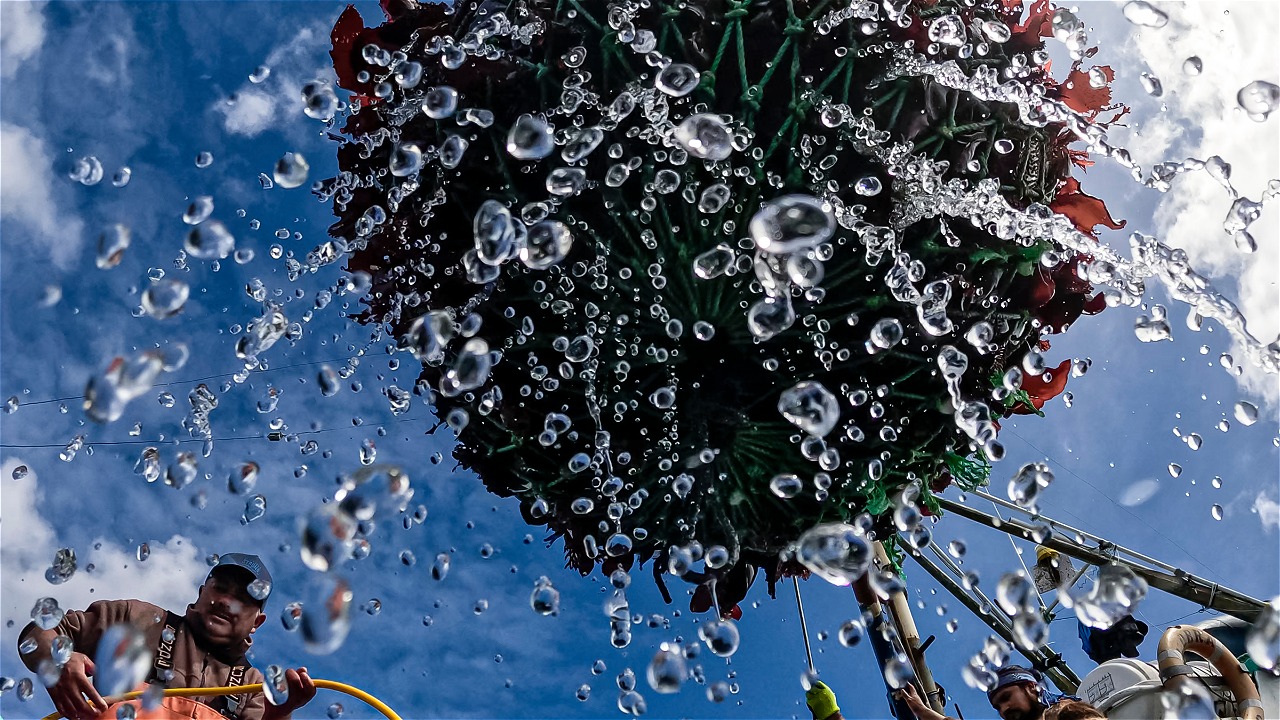GETTING CLOSER TO THE WAB ARSO COMMUNITY THROUGH SEAWEED
Author: Hery Davidson P. Siahaan (UNDIP student majoring in Fisheries who conducted thesis research in Kei)
That is Ohoi - Kei language for village-Wab Arso, one of the large seaweed producing villages in Southeast Maluku. Seaweed cultivation in Ohoi Wab Arso is unique because it can be done throughout the year with a protected cultivation area, namely within the waters of Hoat Soarbay Bay.
Indeed, Southeast Maluku Regency is one of the regions producing seaweed species Eucheuma cottonii. Seaweed cultivation activities in Wab Arso itself have been going on since 2009 using local seeds that have been tested from tissue culture seeds for 3 months of adaptation (March-May 2015), which are finally suitable to be grown in the waters of Hoat Soarbay Bay with the long-line planting method.
In March 2015, seaweed farmers in Wab Arso were introduced to tissue culture seeds from Lampung. Initially, farmers were concerned about the tissue culture seedlings because there was no change in weight and growth during the two weeks of planting. However, in the third week the growth of the seaweed seedlings was so fast that all seaweed farmers in Wab Arso switched to using tissue culture seedlings. The seedlings from Lampung's tissue culture development have proven to be more resistant to changes in natural conditions that trigger symptoms of ice-ice disease, making it profitable for farmers to carry out cultivation practices throughout the year. Currently, Wab Arso has also become a seaweed seed producing area for the Maluku and surrounding areas.
In the afternoon of May 15, 2016, I, as a student conducting research, and the WWF-Indonesia Program Inner Banda Arc Subseascape/IBAS team visited the house of the Head of Ohoi (Village Head) Mr. Karo, who is a seaweed farmer. Our arrival was warmly welcomed by Mr. Karo and the residents around the village. On the sidelines of the gathering, we discussed related research activities that we would do while enjoying a typical Southeast Maluku dish, Embal and a cup of tea that added to the warmth of the atmosphere that afternoon.
Seaweed farmers generally conduct activities in the morning and afternoon. Seaweed farmers consist of groups of men and women. Uniquely, in one family, the seaweed owned by the wife is different from that of her husband. The activities we do daily are cleaning seaweed from pests that stick and observing the condition of the cultivation construction.
Seaweed seedlings used are usually 21-25 days old. To reach the harvesting stage, seaweed farmers need 45-50 days. The seaweed harvest is then dried in the sun and then sold to collectors in Debut Village. So far, seaweed farmers in Wab Arso are still selling grass in dry form (not yet in the form of final products that can be directly consumed). The current constraint faced by seaweed farmers is that the price of seaweed is quite cheap and continues to decline. Seaweed farmers hope that the government can provide a more promising price benchmark because seaweed cultivation is the main livelihood of the residents of Wab Arso.
"The price of seaweed a few years ago was Rp18,000 per dry kilogram, but now it's only Rp6,500 per dry kilogram," said Mr. Karo, the head of Ohoi Wab Arso.
On June 14, 2016, I had one of the most interesting experiences, which was participating in the harvesting of seedlings. Seedlings that are ready to harvest are 21-25 days old. This time we harvested a large number of seedlings, totaling 4,691 kg. The seaweed seedlings were valued at Rp7,000 per kilogram. Harvesting activities were carried out in the afternoon until night. In the future, we hope that Ohoi Wab Arso can be used as a seaweed nursery center for the Maluku and surrounding areas Ohoi.





